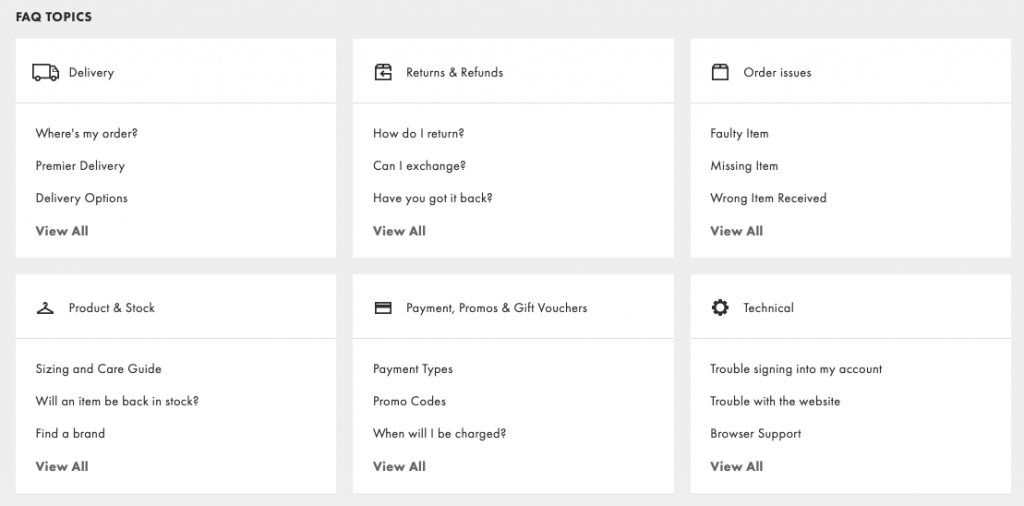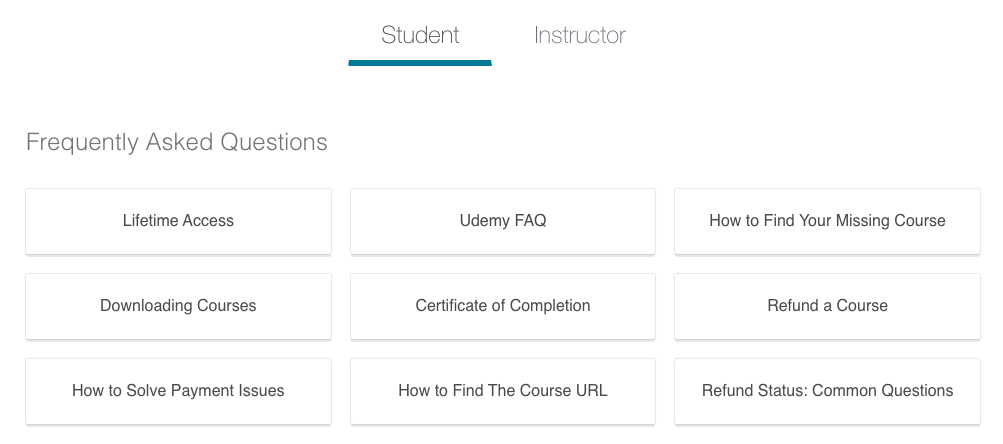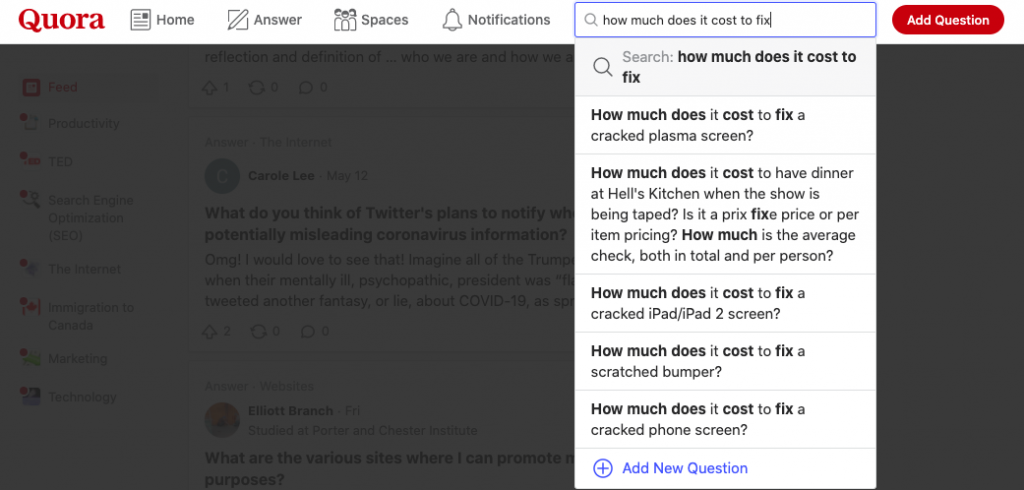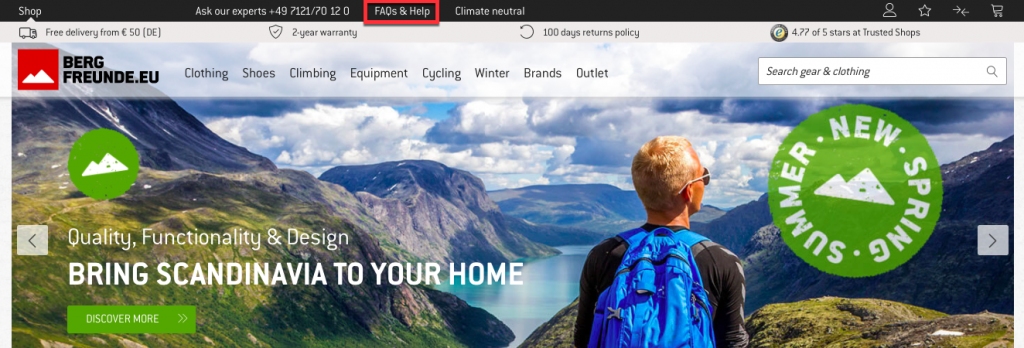How to create a useful FAQ page
When creating or redesigning a website, it’s often the homepage that gets most of the attention. Then the product and services pages. The FAQ page is usually overlooked or treated as an afterthought.
But why overlook a page that can help answer your prospects’ questions and concerns, alleviate purchasing anxieties and reassure them they’re making the right decision to buy from you?
If you don’t have a FAQ page, read on as we share some tips and advice on how to create and get the most out of this often-forgotten page on most websites.
Note: If you’re using the 123 Reg Website Builder, you can quickly add an FAQ section to your site using the Accordion or Tabs widgets.
What is a FAQ page and why is it useful?
FAA stands for frequently asked questions. The FAQ page is a website page that includes short and useful answers to common customer questions.
The goal of this page is to address common concerns, questions, and objections that customers might have, and make them feel more confident buying from you.
Here are two examples of how it looks, one from an online shop and another one from a learning platform that sells courses online:


If you sell products or services online, having a FAQ page is useful for a variety of reasons:
- It saves you time having to answer the same customer questions over and over again.
- It saves your customers time since they don’t have to reach out to you every time they have a question or concern.
- It gives them quick answers and information no matter where they are in the purchasing journey – whether they’ve just discovered your site and want to learn more about where you source your products or how you do business, or need assistance using their purchase.
- It builds trust and improves customer experience.
- It can help with your search engine optimisation efforts since many people look up “how to” questions on Google. This can result in new traffic and prospects to your site.
How to decide which questions to include in your FAQ
There are lots of places where you can look for ideas on what to include in your FAQ page. Start with these three key places:
- Your customers’ direct questions
Your email inbox, social media inbox and customer support tickets should be the first places to look for questions to address in your FAQ.
You can even go through the customer reviews published on your social networks to see whether there are any recurring issues to consider. For example, a customer might mention something like “Be aware that the t-shirts are a size smaller than your normal size” or “a 15” laptop won’t fit into the backpack”.
So, review all those questions and make a list with the ones that keep popping up. You can even take it one step further and try to anticipate follow-up questions that might pop-up. For example, if a customer asks for a refund, they’ll not only want to know the steps to follow but also how long it’ll take for them to get their money back.
Next, group your questions under categories like “Payment”, “Returns and refunds”, “Shipping”, so your customers can quickly jump to the category they’re interested in.
- Your competitors’ FAQs
If you’re a new business or need some inspiration on how to improve your FAQ, you can always check out your competitors’ FAQs to get some ideas on what to include in yours.
- Groups and forums in your niche
Visit groups and forums like reddit, Quora, and Facebook groups that are relevant to your business and industry and see what types of questions people are asking.
So just go to any of these sites, type a question, keyword or topic that’s related to your business and offering and see what comes up.
Here’s an example from Quora:

This can give you some great ideas of popular topics, questions and concerns that you might want to cover in your FAQ.
Tips to create a useful FAQ page
Your FAQ page should be very easy to find on your site and should also make it simple for customers to find the answers they’re looking for. To help with that, here are a few key things to consider:
Make it easy to find
Add it to your navigation menu or your website’s header or footer so it’s easy to find by anyone who visits your site.


You can also add a link to your FAQ page on your product or services pages.
Organise your questions into categories
Don’t just list all the questions and answers on a page. Instead, organise everything into categories so customers can quickly jump to the one they’re interested in.
Some common categories to include are:
- Delivery and payment
- Shipping information
- Returns and refunds
- Product information
- Technical issues
- Contact information
Write questions in the first person
Formulate the questions just as your customers would ask them if they were to reach out to you via social media or a phone call. Or, better yet, use your customers’ exact words.
Incorporating the words and phrases that your customers are using is a great approach to connect with your audience.
Check out this example from the Bergfreunde online shop:

Write clear answers
You’d be surprised how many FAQs avoid giving a straight answer or include confusing instructions that make it difficult for users to understand the information.
Try your best to keep your answers short and clear. Outline the steps to buying a product or getting a refund. Explain exactly what the customer needs to do next and what to expect from you.
Show some personality
Your FAQ page can be a great opportunity to connect with your audience and show a bit of your brand’s personality. So treat it just like you do any other page on your site or any post you share on social media. After all, it’s another way to interact with your customers so make sure you take advantage.
Wrapping up
It’s unfortunate that the FAQ page is often an afterthought for many websites, considering the many benefits it can bring to a business. Make sure you give it try using the tips and advice in this post. Gather customers’ questions in a list, organise them into categories and try your best to come up with answers that are not only clear and easy-to-understand but also show off a bit of your brand’s personality.
